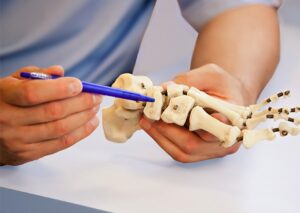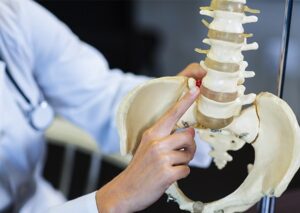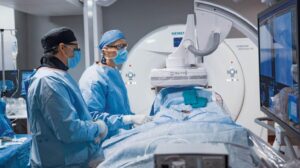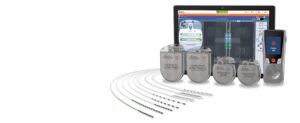Ganglion impar is the lowest paravertebral sympathetic chain, which is placed at the anterior aspect of sacrococcygeal disc used to be blocked in many chronic pain conditions originating from pelvic structures such as the coccyx.
Why do this procedure? (Indications)
Pain felt around the coccyx and perianal region (anus) is often transmitted to the brain via a nerve called the ganglion of Impar. As part of normal tests to see where the pain signals are originating from most patients undergo a Ganglion of Impar nerve block. If this is successful but the patient’s pain returns then they become eligible for further treatment options. Patients suffering from this type of pain are good candidates for Pulsed Radiofrequency to the Ganglion of Impar in order to disrupt the pain signals reaching the brain. The treatment involves placement of special needles in the area of the Ganglion of Impar and stunning the nerve. After this procedure, patients may get long-term relief.
How if the Pulsed Radiofrequency to the Ganglion of Impar performed?
The procedure is performed under X-Ray Guidance (Image Intensifier) usually with the patient sedated. It is a sterile procedure, which passes 3 needles through the sacro-coccygeal disc/ligament into the area of the Ganglion of Impar.
Radio-opaque contrast (dye that can be seen by X-rays) is then injected to confirm the needle’s location next to the nerve.
Once the correct position is confirmed; Local Anaesthetic and usually steroid is injected into the area to see if the pain pathway can be disrupted. If the injection is successful; there is no way of knowing how long it will last.
How effective will it be?
It is not possible to predict or guarantee the effectiveness of any treatment. However, the fact that this treatment has been suggested means that it may be of use. The primary aim of the procedure is to provide long term disruption of the pain signals causing perianal and coccyx pain
There are a number of possible results from the procedure:
- It may treat the pain and the pain does not return
- It may treat the pain for a short period of time (weeks to months) and then the pain returns either less or the same as before. In this case a repeat injection could be indicated.
- There may be no effect on the pain (failure to confirm the source of the pain)
How is the treatment performed?
The procedure will be done as a day patient. It is performed using a mobile X-ray machine for guidance. You will be placed onto the procedure table face down, lying on some pillows for your comfort. We need to get you into the correct position before we start the procedure. As this procedure is usually done under sedation, you will need to starve yourself beforehand, from midnight the night before or morning after a light breakfast if your procedure is in the afternoon. Or as directed You may take all your usual painkillers and other medication unless specifically advised. If you are on blood thinning agents (warfarin), please let the doctor know well in advance as special arrangements will have to be made. Please also bring a list of your medications and any allergies. You will need someone to drive you home after the procedure.
Procedure technique
Before we start the procedure a small intravenous cannula will be placed into a vein in your hand. This is routine and allows us to administer any medication including medication for sedation or fluids if necessary. Your lower back will be uncovered and cleaned with an antiseptic solution to prevent infection. Local anaesthetic is then used to numb the skin before starting. Further anaesthetic will then be used to numb the space between the sacrum and the coccyx. A special needle is guided into the correct space. Once in the space, contrast is injected to confirm the correct placement. An electric current is then Pulsed at the nerve at 40 degrees Celsius for 9 mins and the often repeated at different angles to ensure adequate coverage of the target area

COMPLICATIONS
This procedure is usually safe and uneventful. However, as with any procedure there is always a small degree of risk.
Common Complications
- Continuing pain / no benefit
- Minor bleeding in the area injected
- Bruising in the area injected
- Temporary weakness or numbness from the local anaesthetic
- Brief increased pain that may fluctuate in intensity
More Serious Side Effects
- Damage to surrounding structures
- Infection
- Permanent nerve injury
- Allergy to the anaesthetic drugs used as part of the procedure
- Increase of any pre-existing medical condition such as cardiac conditions
- Bruising around the area from needle trauma
- Aspiration during sedation
- Eye injury while lying prone (face down)
- Serious anaesthetic / procedural complications and very rarely death
- Increased lifetime risk of cancer due to X-rays exposure
- Very rare risk of surgery due too injuries from the procedure
Please discuss with your doctor any other questions you may have about this procedure or this information sheet. If you agree to have the procedure, you will be asked to sign a consent form.
If you notice –
- Any swelling from the site,
- Any bleeding from the site, or
- Have any other concern
Please contact your General Practitioner, Queensland Pain Clinic, or the Emergency Department of your local hospital.




















